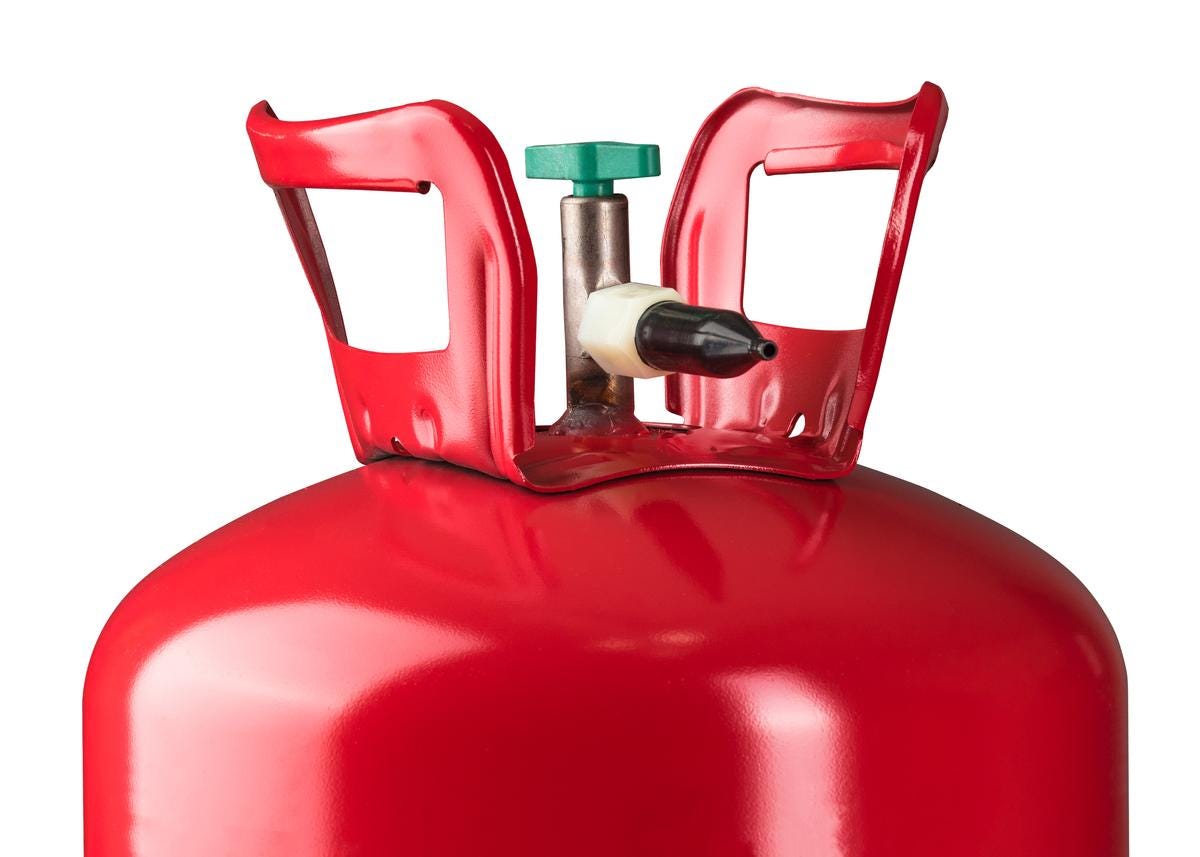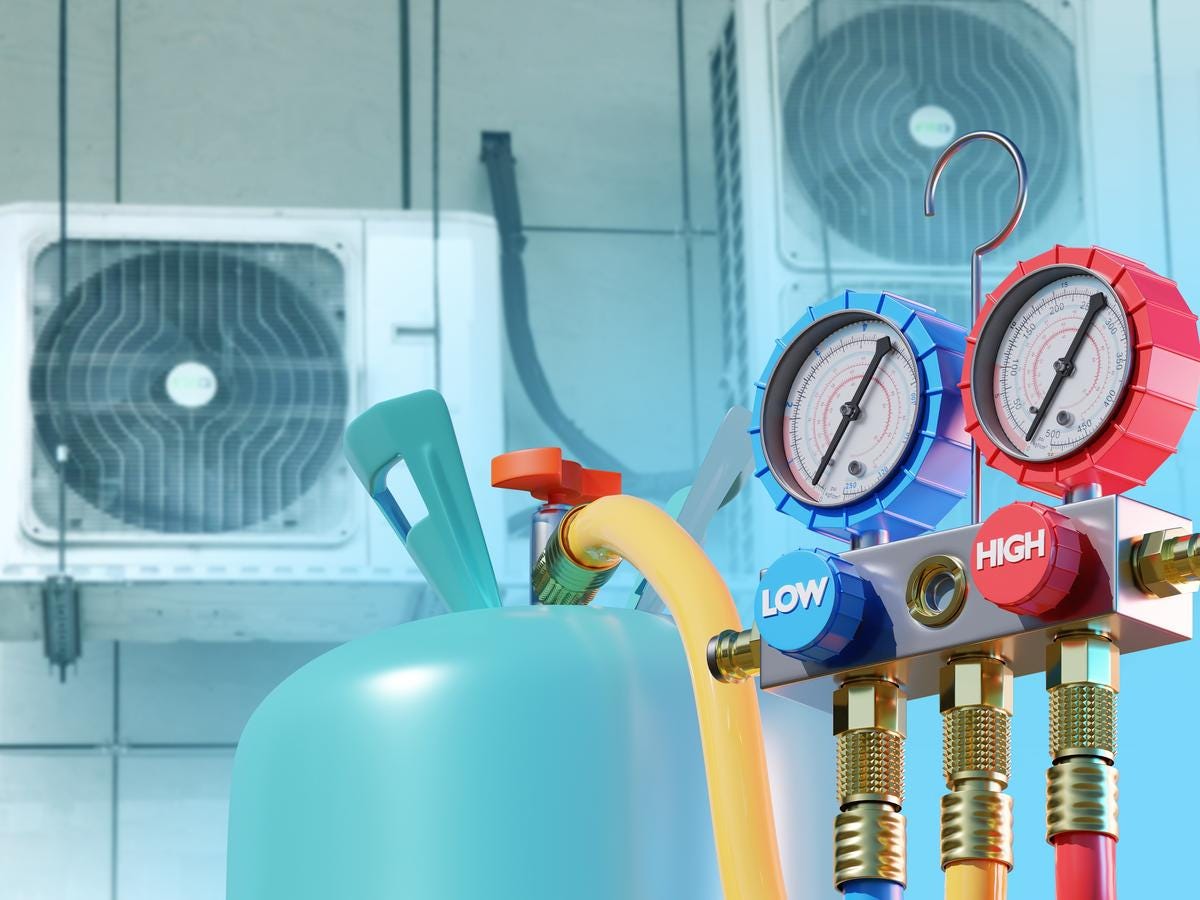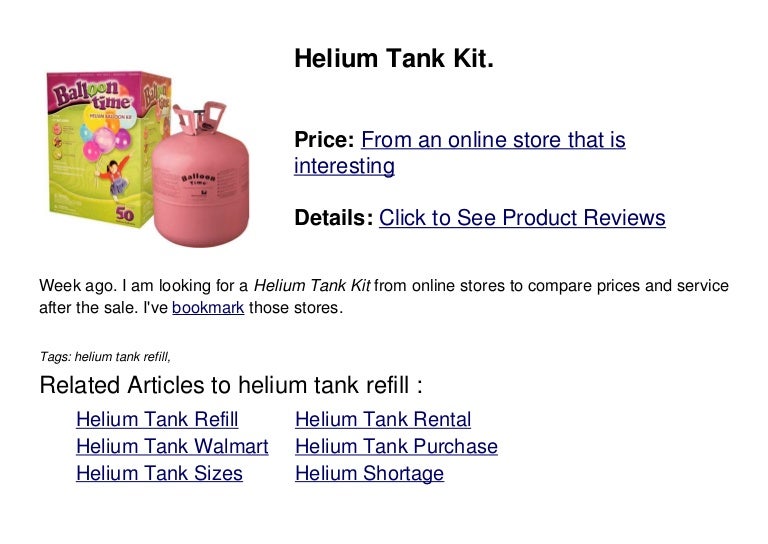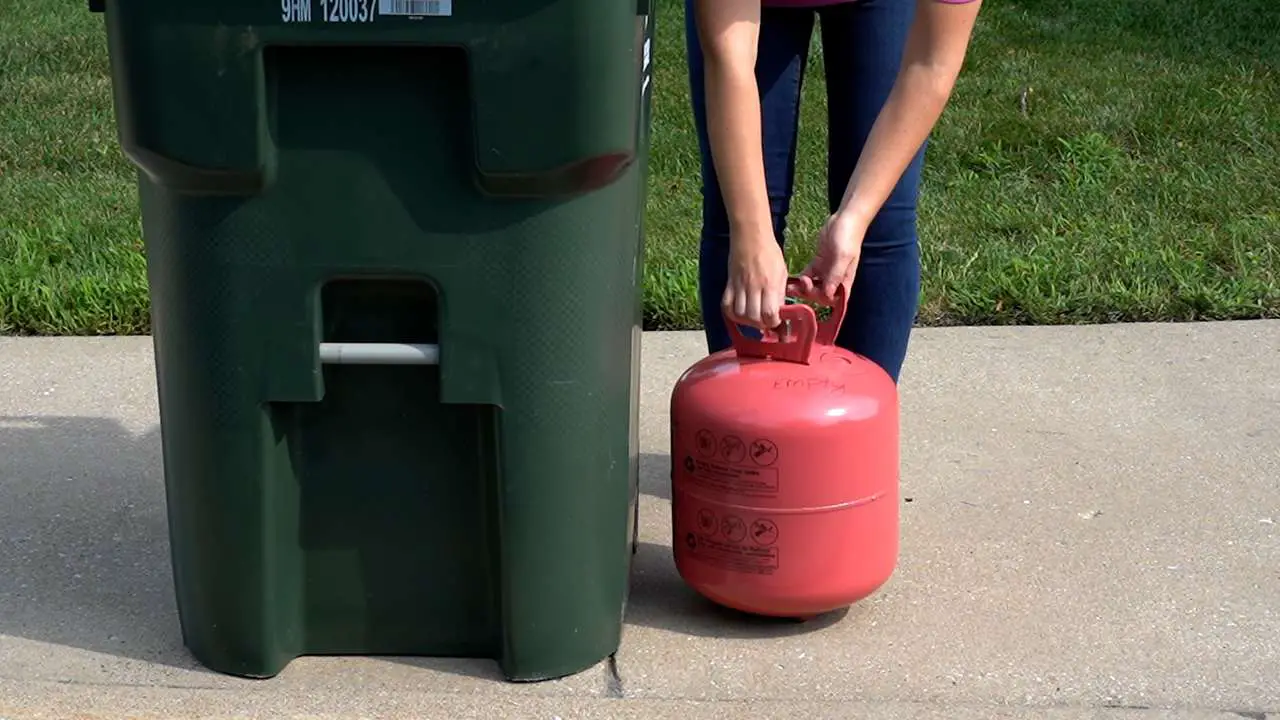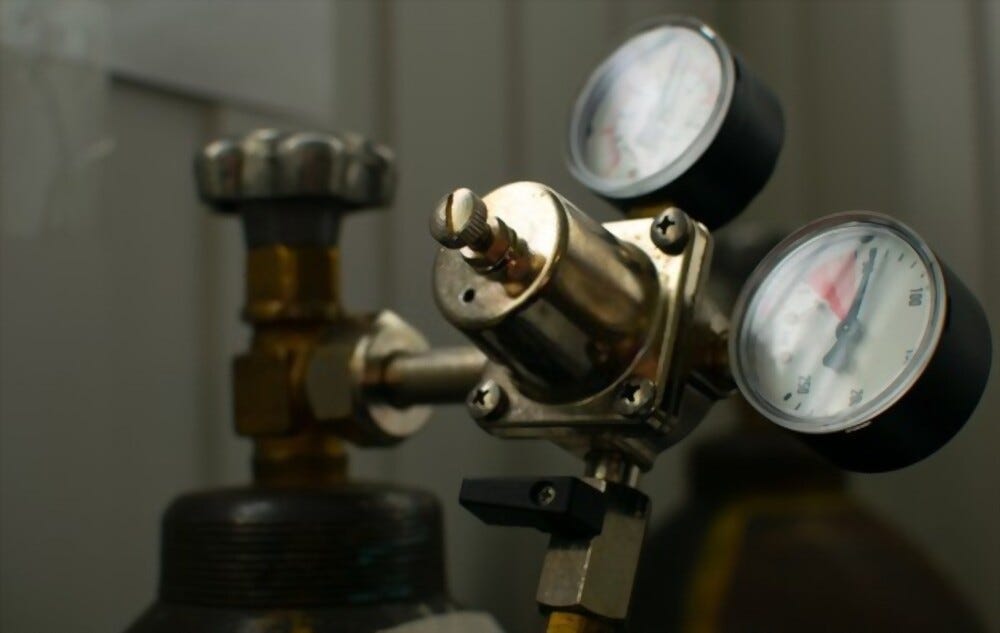Where Can I Refill A Helium Tank
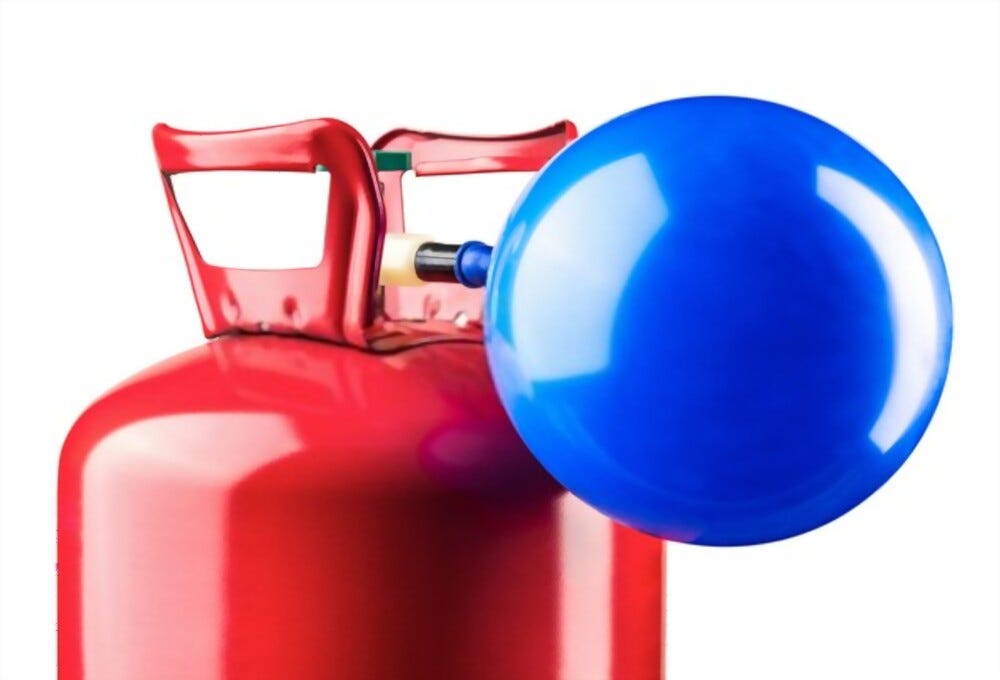
Imagine this: You're throwing a fantastic party, birthdays, wedding reception, or just a simple get-together. You’ve got the decorations, the food, and the music all set. But then, disaster strikes! Your beautiful balloon decorations are starting to droop. The culprit? A near-empty helium tank. The panic sets in: "Where can I refill this thing?!"
Finding a reliable helium refill source is crucial, and that's exactly what we'll cover in this article. We'll explore various options, discuss what to expect, and help you make the best choice for your needs and budget.
Understanding Your Helium Tank
Before we dive into refill locations, let's quickly understand the types of helium tanks commonly used for balloons. This knowledge will help you communicate more effectively with refill providers.
- Disposable Helium Tanks: These are typically smaller, single-use tanks often found in party supply stores. They aren't designed for refilling.
- Refillable Helium Tanks: These tanks are sturdier and designed for multiple uses. They often come in various sizes, from small portable tanks to larger commercial-grade options.
It's essential to identify the type of tank you have before attempting to refill it. Attempting to refill a disposable tank can be extremely dangerous.
Options for Refilling Your Helium Tank
Here are the most common places to get your refillable helium tank filled:
Party Supply Stores
Many party supply stores offer helium refill services, particularly for smaller tanks. This is often a convenient option if you purchased your tank from the same store. Prices can vary, so it's wise to call ahead and compare quotes.
Check Before You Go:
- Tank Size: Know the size of your tank (e.g., 12 cu ft, 20 cu ft, 55 cu ft). This is usually printed on the tank itself.
- Refill Policy: Ask about their refill policy. Some stores only refill tanks purchased from them.
- Pricing: Inquire about the cost per refill. Prices can fluctuate based on market demand and location.
- Hours of Operation: Confirm their hours to avoid a wasted trip.
Welding Supply Stores
Welding supply stores are a reliable source for helium refills, especially for larger tanks. They typically cater to industrial and commercial clients but often welcome individual customers as well. They frequently sell Helium/Argon mixed gas (for welding) so clarify you want *pure* Helium for balloon inflation.
Things to Keep in Mind:
- Tank Compatibility: Ensure your tank's valve is compatible with their filling equipment. Most standard valves are compatible, but it's always best to double-check.
- Tank Certification: Welding supply stores may require your tank to be within its certification period. Helium tanks, like propane tanks, need to be periodically inspected and re-certified for safety. Look for a date stamp on the tank.
- Bulk Discounts: If you anticipate needing frequent refills, inquire about bulk discounts.
Gas Supply Companies
Companies specializing in industrial gases, like Airgas or Linde, are another excellent option, particularly for larger tanks or ongoing helium needs. They usually offer the most competitive prices, especially if you establish a business account, but may be less accommodating for small, one-time refills.
Considerations:
- Account Requirements: They may require you to set up an account, which could involve paperwork and credit checks.
- Minimum Purchase: Some gas supply companies may have minimum purchase requirements.
- Delivery Options: If you have a very large tank or need frequent refills, inquire about delivery options.
Party Rental Companies
Party rental companies often provide helium tank rentals and refills as part of their service offerings. This can be a convenient option if you're already renting other party equipment from them.
Advantages and Disadvantages:
- Convenience: One-stop shopping for all your party needs.
- Potentially Higher Cost: Rental companies may charge a premium for helium refills compared to other sources.
Hobby Shops (Model Airplane/Rocketry)
While less common, some hobby shops that specialize in model airplanes or rocketry may offer helium refills. This is because helium is sometimes used for inflating weather balloons or other hobby-related projects.
Points to Note:
- Limited Availability: Not all hobby shops offer this service.
- Small Tank Focus: They're more likely to cater to smaller tanks used for hobby purposes.
Finding Local Helium Refill Locations
The easiest way to find helium refill locations near you is to use online search engines and mapping services. Here are some effective search terms:
- "Helium tank refill near me"
- "Party supply store with helium refills"
- "Welding supply store helium refill"
- "Gas supply company helium refills"
Don't forget to check online reviews and ratings to get an idea of the quality of service and pricing offered by different providers.
Safety Precautions When Handling Helium Tanks
Helium is a non-toxic, inert gas, but it's essential to handle helium tanks with care to prevent accidents.
- Secure the Tank: Always secure the tank in an upright position to prevent it from falling over.
- Transport Safely: When transporting a helium tank in your vehicle, ensure it's properly secured and won't roll around.
- Ventilation: Use helium in a well-ventilated area. While helium is non-toxic, it can displace oxygen and cause asphyxiation in confined spaces.
- Temperature: Store helium tanks in a cool, dry place away from direct sunlight and heat sources.
- Valve Protection: Protect the tank valve from damage. A damaged valve can leak or cause the tank to explode.
- Never Inhale: Inhaling helium can be dangerous. While it temporarily alters your voice, it displaces oxygen in your lungs and can lead to dizziness, loss of consciousness, and even death.
Cost of Helium Refills
The cost of helium refills can vary depending on several factors, including:
- Tank Size: Larger tanks generally cost more to refill than smaller tanks.
- Location: Prices can vary from region to region.
- Supplier: Different suppliers have different pricing structures.
- Market Demand: Helium prices can fluctuate based on supply and demand.
To get the best price, it's advisable to call around and compare quotes from multiple suppliers.
When to Consider Buying a Helium Tank
If you frequently need helium for parties, events, or other purposes, it might be more cost-effective to buy your own refillable helium tank. This eliminates the need to rent tanks or make frequent trips to refill locations.
Factors to Consider:
- Frequency of Use: How often do you need helium?
- Storage Space: Do you have enough space to store a helium tank safely?
- Initial Investment: Buying a helium tank involves a significant upfront cost.
- Maintenance: Refillable helium tanks require periodic inspection and re-certification.
Can You Refill a Helium Tank Yourself?
While technically possible, refilling a helium tank yourself is strongly discouraged unless you have the proper equipment, training, and experience. Helium is stored under high pressure, and improper handling can lead to serious injury or even death. There are high pressure gas transfer pumps available, but you'd also need access to a larger helium source. This isn't practical for most people.
It's always best to leave helium tank refills to qualified professionals.
Troubleshooting Common Helium Tank Issues
Sometimes, you might encounter issues with your helium tank, even if it's full. Here are some common problems and how to troubleshoot them:
Balloon Isn't Inflating
Possible Causes:
- Empty Tank: This is the most obvious cause. Check the tank's pressure gauge (if it has one) to see if it's empty. If not, then...
- Clogged Nozzle: The nozzle where you attach the balloon might be clogged with debris. Use a small needle or pin to clear the blockage.
- Faulty Valve: The tank valve might be damaged or not functioning correctly. Try opening and closing the valve several times to see if it releases any helium. If not, the valve may need to be repaired or replaced.
- Incorrect Balloon Type: Ensure you're using balloons designed for helium inflation. Regular air-filled balloons won't float properly.
- Balloon Size: Larger balloons require more helium. If your balloon is too large for the tank's capacity, it won't inflate fully.
DIY Actions:
- Check the Tank Pressure (if available): Most smaller tanks don't have a pressure gauge, but larger refillable tanks often do. A low pressure reading indicates an empty or near-empty tank.
- Clear the Nozzle: Use a small needle or pin to carefully clear any debris from the nozzle.
When to Call a Professional: If you suspect a faulty valve or if you're uncomfortable troubleshooting the tank yourself, contact a helium supplier or a qualified technician.
Helium is Leaking
Possible Causes:
- Loose Connection: The connection between the tank valve and the inflation nozzle might be loose.
- Damaged Valve: The tank valve might be damaged or leaking.
- Punctured Tank: The tank itself might be punctured.
DIY Actions:
- Tighten Connections: Carefully tighten the connection between the tank valve and the inflation nozzle.
When to Call a Professional: If you suspect a damaged valve or a punctured tank, immediately stop using the tank and contact a helium supplier or a qualified technician. Do not attempt to repair a damaged tank yourself.
Balloons Aren't Floating For Long
Possible Causes:
- Helium Purity: The helium might not be pure enough. Some suppliers mix helium with air to reduce costs, which can affect the float time of balloons.
- Balloon Quality: Cheap or low-quality balloons tend to leak helium faster than high-quality balloons.
- Temperature: Temperature fluctuations can affect the volume of helium in balloons, causing them to deflate faster.
- Hi-Float Treatment: This polymer gel dries inside latex balloons and creates a coating which dramatically reduces helium leakage, allowing them to float for 25x longer.
DIY Actions:
- Use High-Quality Balloons: Invest in high-quality balloons from a reputable supplier.
- Avoid Temperature Extremes: Keep inflated balloons away from direct sunlight and extreme temperatures.
When to Call a Professional: If you suspect the helium purity is the issue, contact your supplier to inquire about their helium quality standards. Switching to a different supplier might be necessary.
Final Thoughts
Finding a reliable helium refill source is essential for any event or project that involves balloons. By understanding your options, taking necessary safety precautions, and troubleshooting common issues, you can ensure your balloons stay afloat and your event is a success. Remember, when in doubt, consult with a qualified professional to avoid any risks or complications. Now go forth and inflate those balloons!

